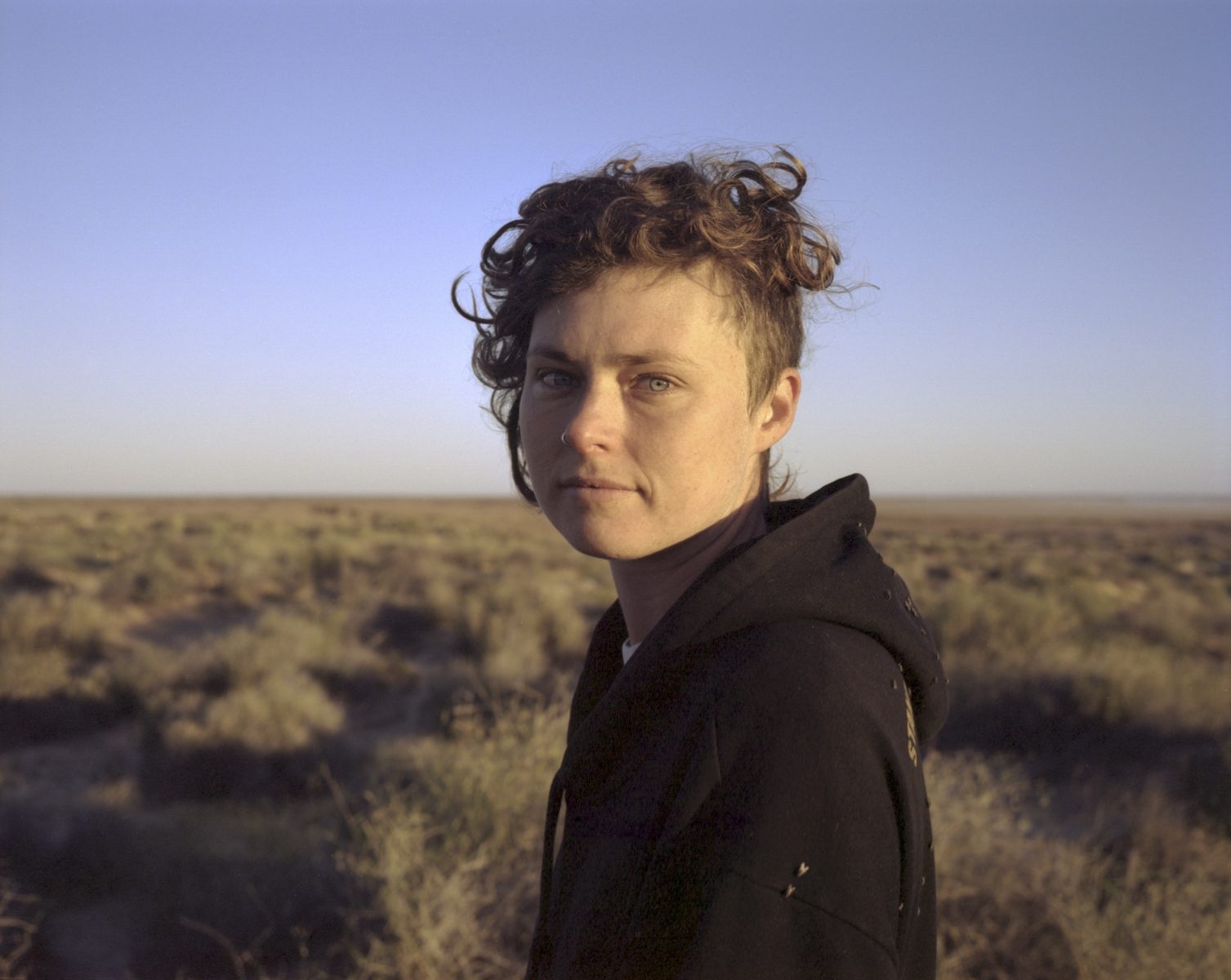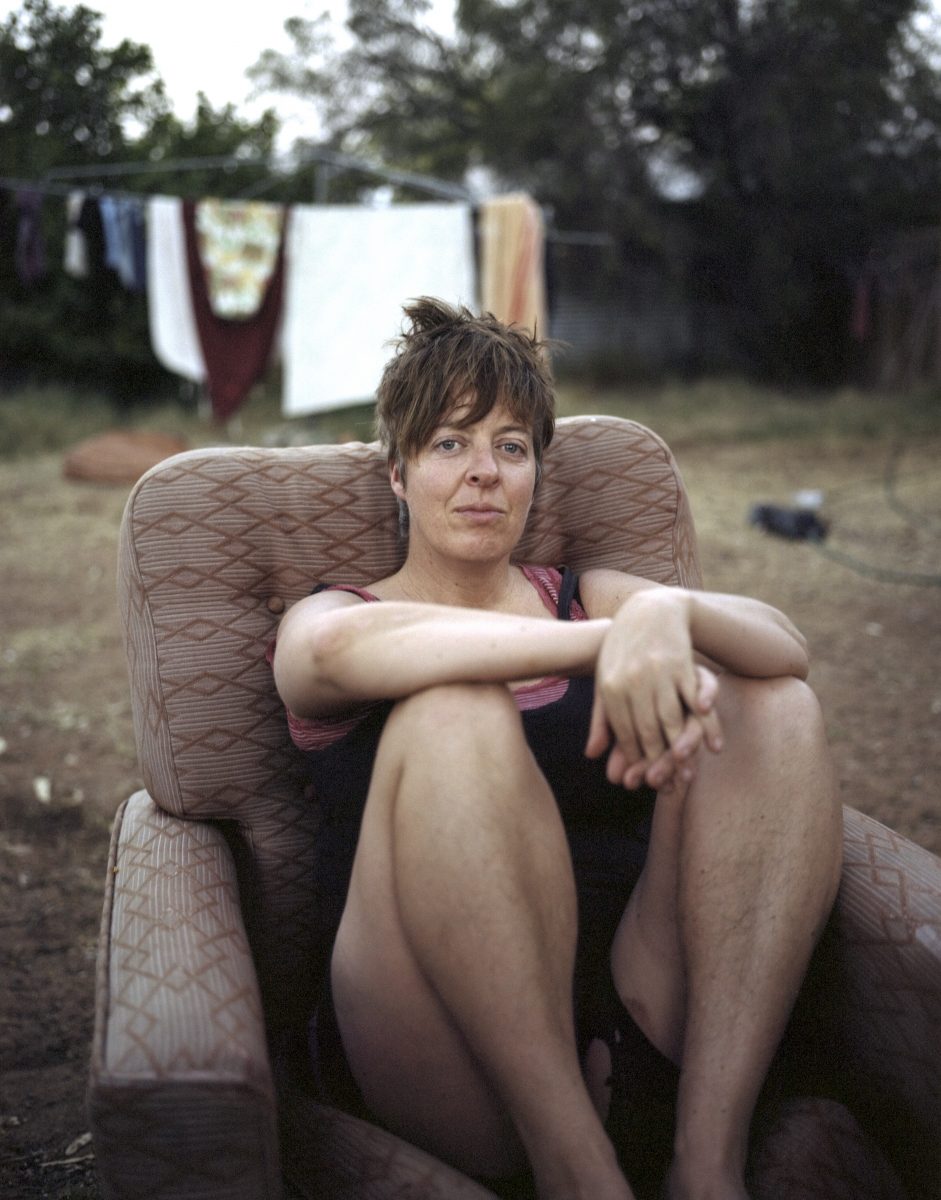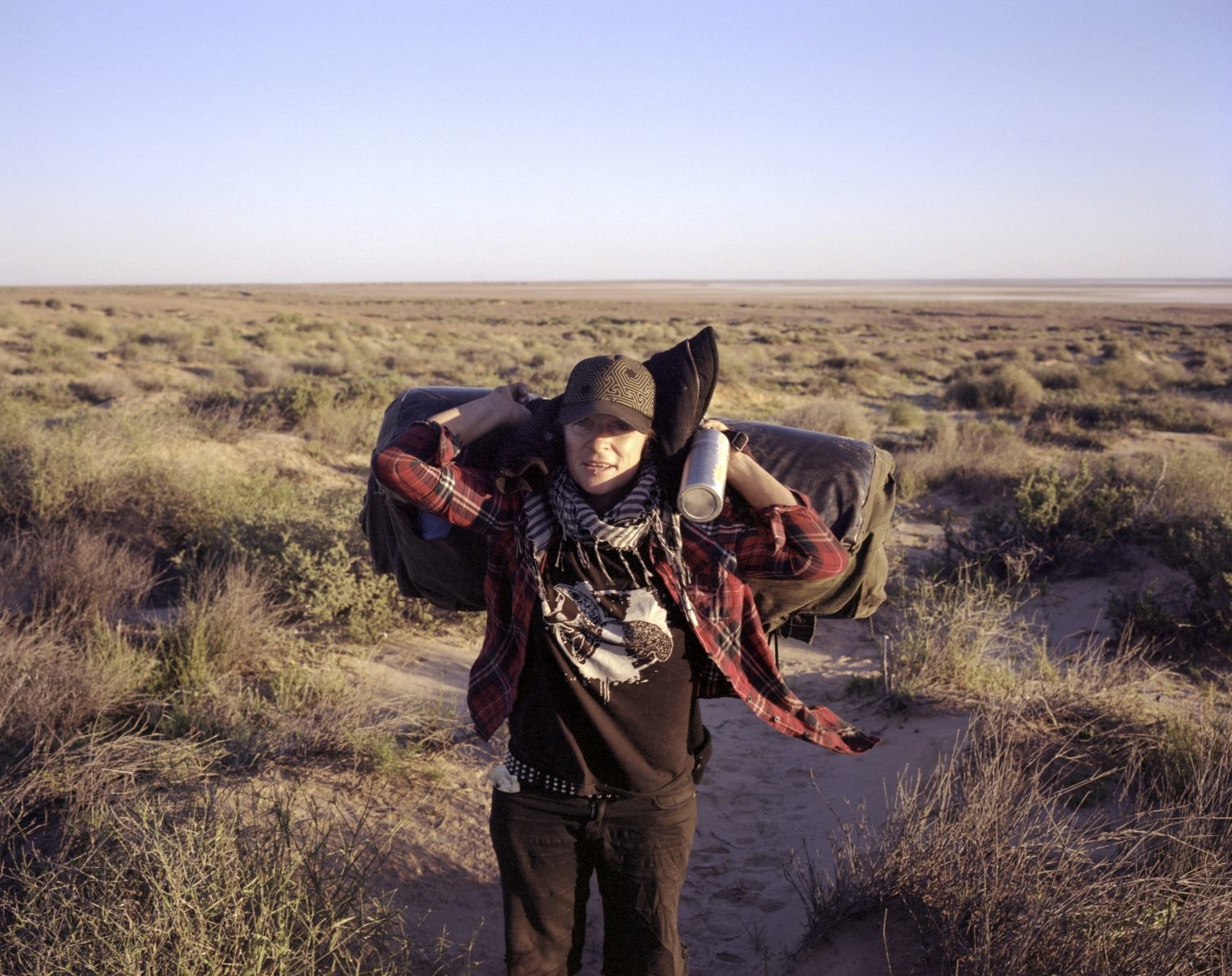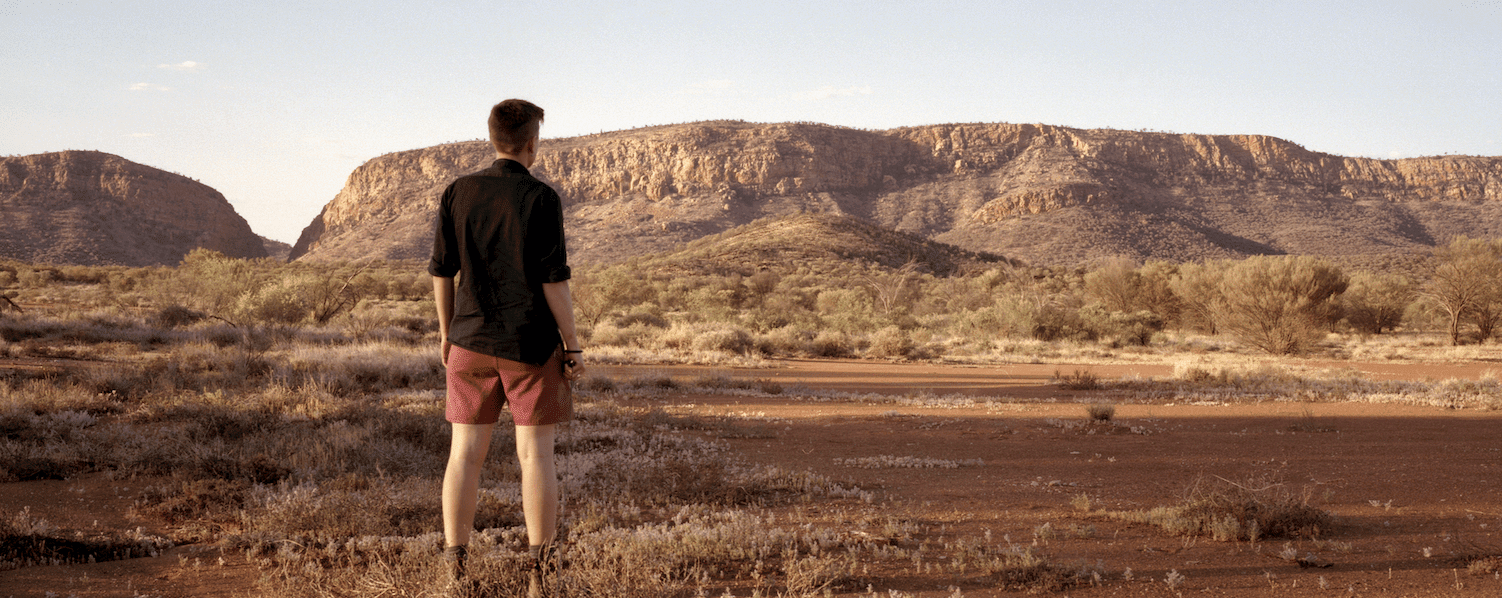Since the 1980s, the South Australian and Northern Territory outback has been the site of protest and resistance to uranium mining developments.
Since the 1980s, the South Australian and Northern Territory outback has been the site of protest and resistance to uranium mining developments, with the first of the Roxby Blockades happening in 1983 and again in 1984. These blockades in the desert brought people from all over Australia to protest at the gates of the Olympic Dam uranium mine and demand that it be shut down. People have been travelling to these sites in order to learn for themselves about what exactly is happening ‘out-there’, so the issues are no longer ‘out of sight out of mind’.
Growing up and living in Australia has meant a constant re/forming of an Australian cultural, social and political identity. This work is an investigation into the ways in which the anti-nuclear community, of which I am part of, are developing, and have developed, our own connection to place, memory and history amidst broader Australian social narratives, and, who are questioning and challenging what it means to exist in the contemporary Australian physical, social and political landscape.
LGBTIQ people are often at the forefront of anti-nuclear activism
Many LGBTIQ people are often at the forefront of anti-nuclear activism, and this is due, perhaps, to the challenging of the status-quo and heteronormative and patriarchal presence in nuclear weapons manufacturing, mining and the military industrial complex. Feminist scholar Alison Bartlett writes in her essay ‘Feminist Protest in the Desert’ (2013) “The masculine authority invested in understandings of the military and the desert was challenged by the visibly women-only protest, as the heterosexual matrix was threatened by the visibly lesbian protesters […] thus, authority is que(e)ried in fundamentally political ways that are anchored in gender and sexuality. In the Australian desert, this queerness is arguably magnified, in a landscape so overdetermined.”
Anti-nuclear protest in Australia largely erupted in the 1970s in opposition to uranium mining, but the issue had been growing since the end of World War II, into the Cold War era. The official Australian government position during the Cold War was that the nuclear threat was real and imminent; it “had to be prepared for, through both bomb testing and home preparation.” The Defence department disseminated leaflets on how to survive a nuclear attack and school children were learning how to ‘duck and cover’. It was no wonder that the British government gained Australia’s unwavering support for its nuclear testing program to be carried out on Australian soils, rather than in the UK, (Prime Minister Robert Menzies didn’t even consult his cabinet at the time). The reason for this was that after the end of WWII, Britain, Australia’s ‘mother country’, was losing power and was eager to become part of the global nuclear arms race.
The contemporary anti-nuclear movement
The Cold War psyche of the imminent nuclear threat infected much of the generation, with little known about the effects of radiation on human health and the environment, and so there was little opposition to uranium mining until after the mass protests against the Vietnam War. The protests against uranium mining were coinciding with the Campaign for Nuclear Disarmament (CND) and the People for Nuclear Disarmament (PND) where the links between uranium mining and nuclear proliferation were evident. The importance of an anti-nuclear movement in Australia became evident during these campaigns, and the links between social and environmental justice, Aboriginal rights and solidarity were at the core of the movement.
By locating the lives of the contemporary anti-nuclear movement, I am looking at the ways we come together, usually at a camp of some kind– either a protest, meeting or journey to sites of nuclear developments and/or resistance- and how we forge connections to place and to each other amidst a contested physical and sociopolitical landscape.
Lumina, an Australian women’s photography collective
Jessie Boylan is an artist based on Dja Dja Wurrung country in Central Victoria. She primarily uses photography, video and sound to explore environmental, social and psychological disturbances and ways that art can engage with our catastrophic times. Spanning a documentary-based practice, Boylan is interested in collaborative practice and the boundaries and blurring of fact and actuality through modes of affect and disruption. She is a member of Lumina, an Australian women’s photography collective, as well as the Atomic Photographers Guild, an international group who aim to render visible all aspects of the nuclear age, and she was a key artist in the Nuclear Futures/Alphaville community arts project, which linked artists working with atomic survivor communities, to bear witness to the legacies of the atomic age through creative arts.
“The realities of a nuclear past, nuclear present and nuclear future affects us all; those who are consistently marginalized are fully cognizant of the impacts of having their voice silenced, not taken away, but systematically silenced. An intersectional analysis, along with a breaking down of the inherent power structures which attempt to control and determine which stories get told and which voices get heard is essential; because systemic discrimination, capitalism and colonialism ensures that all of our struggles are bound up together. We, activists, feminists and queers have the tools and the ability to form place and memory-making, to connect struggles, to strengthen our strengths and imagine a more sustainable and just future, for all beings.”


Hilary is a member of the Medical Association for Prevention of War, she first moved to Mparntwe /Alice Springs, Arrernte country, in 2002, originally just for 12 months, but then she got glued to the place after getting involved in activism and developing strong relationships with the community.
“When I came out as a lesbian, I was naively shocked how there could be racism in the white lesbian community. I had thought that if we experience discrimination because of our sexuality, we would understand the nature of discrimination, and be able to extrapolate that to other groups such as people of colour, those of different religions, different class. Nowadays there is a discourse around intersectionality, which explains how the oppression of any group is connected and affects all of us. Similarly, the exploitation and destruction of the earth can be understood. My involvement with anti-nuclear campaigns, Aboriginal solidarity, environmental protection and queer pride have this common understanding.”

Tully is an activist and women’s health worker based on Arrernte country in Mparntwe/Alice Springs in the Northern Territory.
“Being queer, coming out, and experiencing discrimination has been a catalyst for questioning the status quo and exploring unconventional paths in my life. We gravitate towards likeminded individuals and each person/community presents an opportunity to expand our ideas of what is possible. Alongside my young experiences of being queer, learning first about the atrocities of the British atomic tests in this country, I was shocked and disgusted about my white colonial ancestry. Recognising the insidious and genocidal racism towards Aboriginal people in this country was extremely formative for me. Reflecting on privilege is a crucial part of keeping in check with reality and being humble.”
Emma (Crunch) is an activist and primary school teacher based on the stolen lands of the Wurundjeri people of the Kulin Nation in Narrm/Melbourne.
“Perhaps queers tend to be anti-nuclear because it is a necessarily highly regulated, undemocratic industry with concentrated power. We tend to try and break down some of these power structures in our lives and relationships, as well as power sources.”
